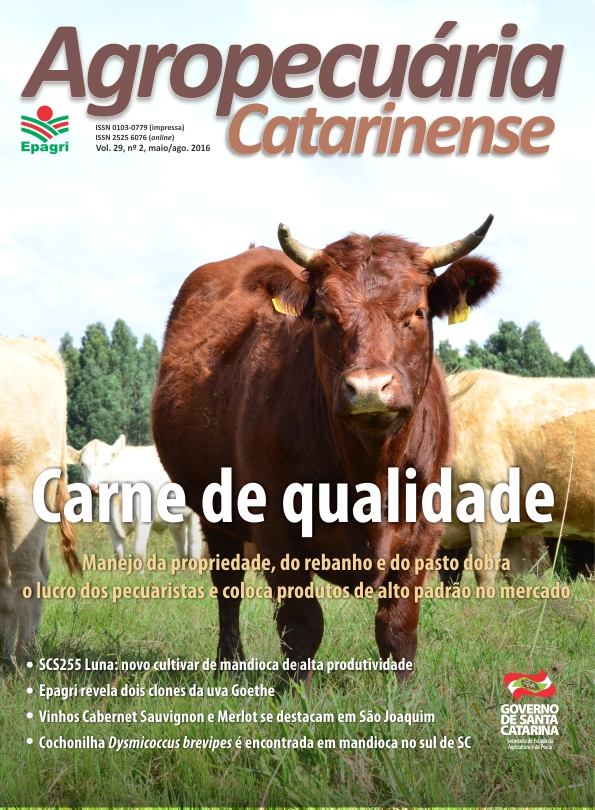The vine ‘Goethe’ and its clones in Vales da Uva Goethe
DOI:
https://doi.org/10.52945/rac.v29i2.68Keywords:
Geographic Indication, Mutation, Wine production, Grape.Abstract
Abstract: The Goethe grape cultivar is widely cultivated in the region of Urussanga, Santa Catarina, Brazil, since the early 20th century, when it was introduced. From the 1920s to the 1960s, it was accountable for the fame and acceptance of the region’s white wine throughout the country and for its national and international awards. In 2012, it was assigned by the National Institute of Industrial Property (INPI) with the geographic indication “Vales da Uva Goethe”. More than a century of cultivation, two clones were isolated and multiplied from the Goethe cultivar, the ‘Goethe Primo’ and the ‘SCS420 Goethe Cristal’. These two clones keep the same phenology and cultural features of the original cultivar, differentiating themselves primarily by the characteristics of the fruit and the wine produced. The Goethe Primo cultivar presents larger grape berries, less colored, with less acidity and thicker skin. The SCS420 cultivar Goethe Cristal displays green colored grape berries, with bigger size and less acidity than the original cultivar. The wines produced from the clones are characterized by being less acid, having floral aroma notes and being less intense.Metrics
References
GALET, P. Cépages et vignobles de France – l´ampelographie française. Montpellier: Déhan, 1990. 400p.
GIESBRECHT, H.O.; MINAS, R.B.A.; GONÇALVES, M.F.W.; SCHWANKE, F.H. Indicações geográficas brasileiras – Vinho. Brasília: Sebrae, INPI, 2014. 64p.
GIOVANNINI, E. Produção de uvas para vinho, suco e mesa. Porto Alegre: Renascença, 2008. 368p.
HEDRICK, U.P. Grapes of New York. Albany: J.B. Lyon Company, 1908. 558p.
INGLEZ DE SOUZA, J.S. Uvas para o Brasil. Piracicaba: Fealq, 1996.
SCHUCK, M.R.; MOREIRA, F.M.; GUERRA, M.P.; VOLTOLINI, J.A.; GRANDO, M.S.; LIMA DA SILVA, A. Identificação molecular da uva ‘Goethe’ de Urussanga, SC, por marcadores microssatélites. Revista Brasileira de Fruticultura, v.32, p.825831, 2010.
VIEIRA, A.C.P.; MAESTRELLI, S.R.; ARCARI, S.G. Você sabe o que é uma indicação geográfica? Cartilha da indicação de procedência dos Vales da Uva Goethe. Florianópolis: Epagri, 2014. 20p.
VIVC (Vitis International Variety Catalogue). Disponível em: <http://www.vivc. de>. Acesso em: 26 maio 2015.
VON BABO, A.; RÜMPLER, T. Kultur und Beschreibung der amerikanischen Weintrauben. Berlim, Paul Barey, 1885. 56p.
Downloads
Published
How to Cite
Issue
Section
License
Copyright (c) 2016 Revista Agropecuária Catarinense

This work is licensed under a Creative Commons Attribution 4.0 International License.



